
1969 Wheels and Tires
1969 Shelby Wheel Recall Campaign U-01
spider. The rim was produced by a Japanese company called Kamifuji Enterprises. The spider (aluminum center) was cast by Cal-Alloy for Keystone. Keystone was a popular 1960s wheel manufacturer with a great deal of experience building wheels. Originally, these two parts of the wheels were glued together with epoxy and an additional bead was rolled into the rim securing the center spider. Later, the spider was also riveted to the rim. The rivets created new problems, but none of any consequence. Before production, Ford Motor Company immediately began testing the new wheels. Several tests were conducted during the
Grist Millprocess. These included stressing the wheels until failure, roll tests, and pull-out testing. Several studies were also conducted to determine the proper lug nut for the wheel. These tests would continue after production of the cars was started. Shelby engineers understood that tightness (torque) on these lug nuts was critical. Specifications called for 100 pounds of torque.
The resultant loss of a wheel can jeopardize vehicle control
-Ford Field Campaign Review Committee

Decals were placed on the windshields of all new cars. These decals instructed dealers to retorque all wheels to 100 pounds before delivery.
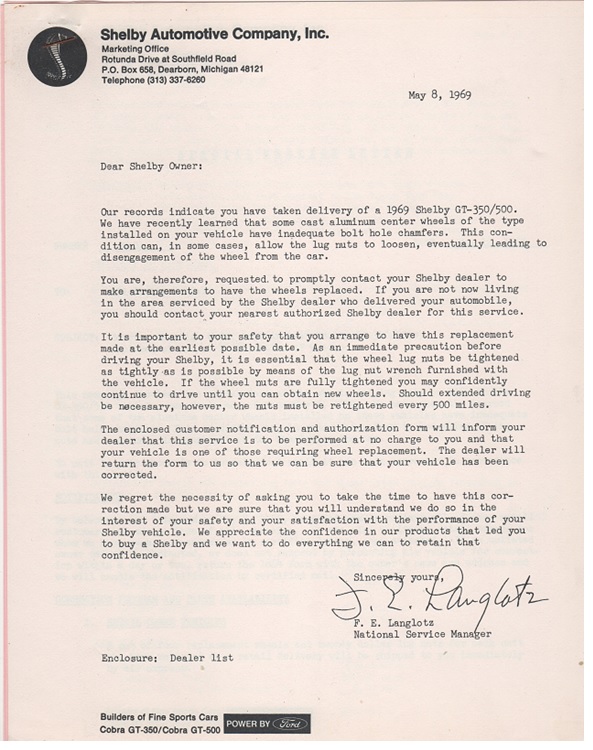
Magnum 500wheel and replacement lug nuts in place of the Shelby wheel. AO Smith was requested to rework all the completed cars in their inventory with new, revised wheels. The revised wheel had a new chamfer in the spider to accept the lug nuts more adequately. Defective wheels were to be stamped defective and marked with red paint.
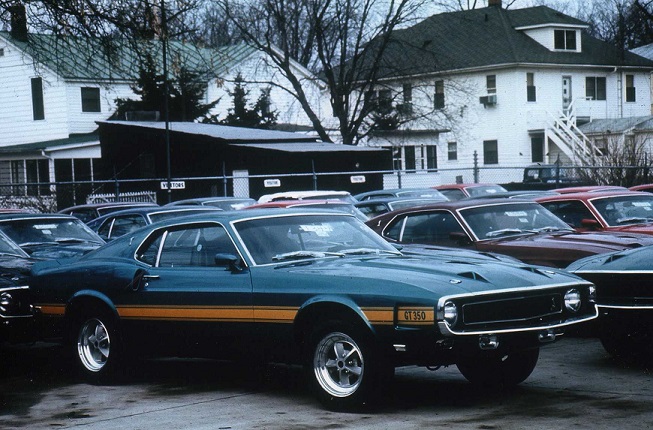
Factory fresh 1969 models at the AO Smith holding lot.
Let's take a look at 1969 Shelby wheels and tires. During the 1969-70 model year, there were some changes.
I have tried to find as many vintage photographs as I could to illustrate the correct tires. This is 1969 # 1344.
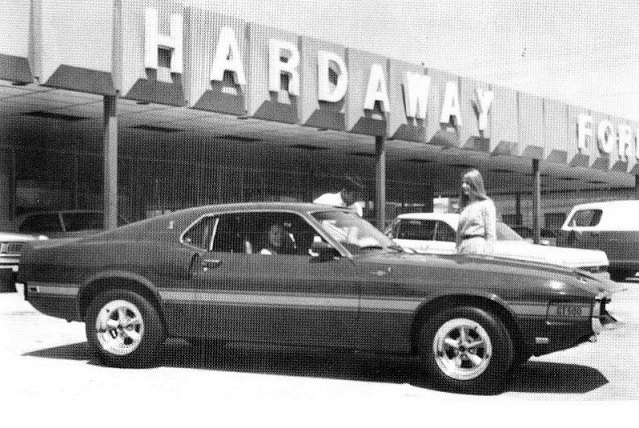
This original period photo from is from the internet.
The first tire used was a carry-over from the 1968 model year. The Goodyear Polyglas Wide Tread tire was a black wall tire.
This is the same tire used on the GT500 KRs and a few other 1968 models. The size was E70 x 15, just like the 1968s.
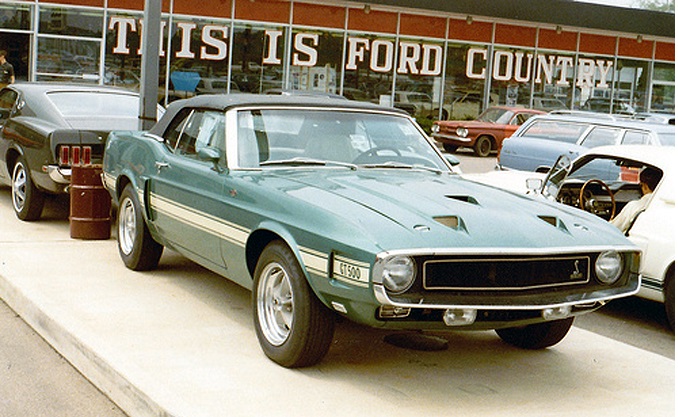
The black side walled tires were used until the supply ran out. It is believed these tires were also
used on the Hertz cars.
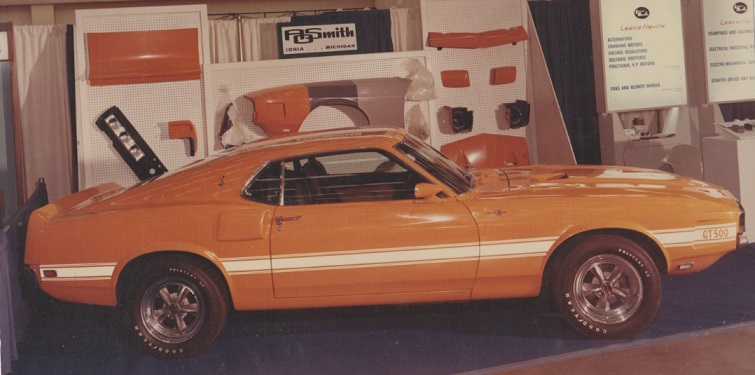
The new larger "F60" series tires on a new 1969 Shelby.
The new, larger tires replaced the black side walled tires. These tires were used with the new beafier (bigger)
suspensions. The size was F60 x 15. This tire has raised white letters. The tire size is not readily visible.
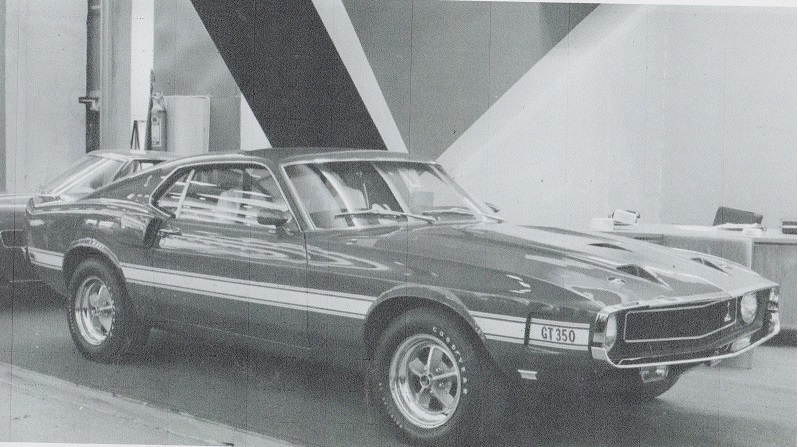
These larger sized tires were also used on the GT350 models.
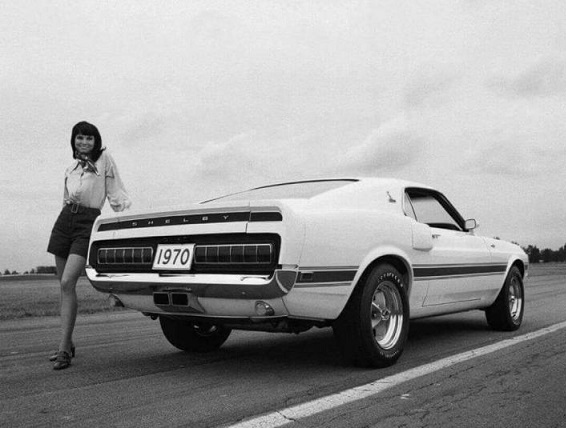
This factory press photograph shows a 1970 with the F60 raised white lettered tires.

To the best of my knowledge, all 1969 and 1970 Shelbys used the BF Goodrich 7.35 x 14 space saver tire.
It's an interesting choice, since all the other tires are Goodyears.